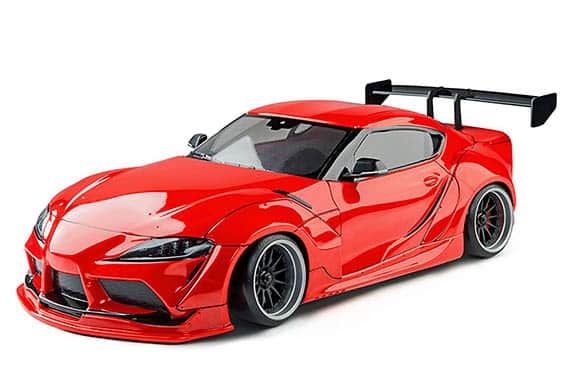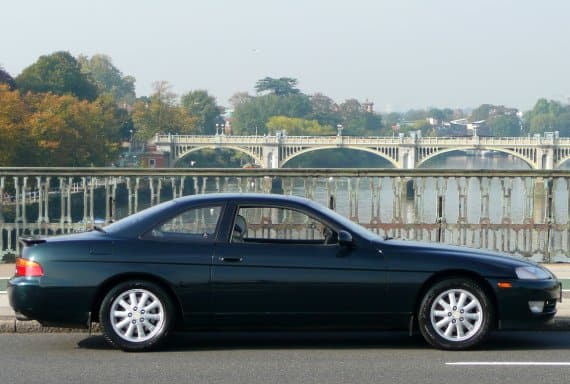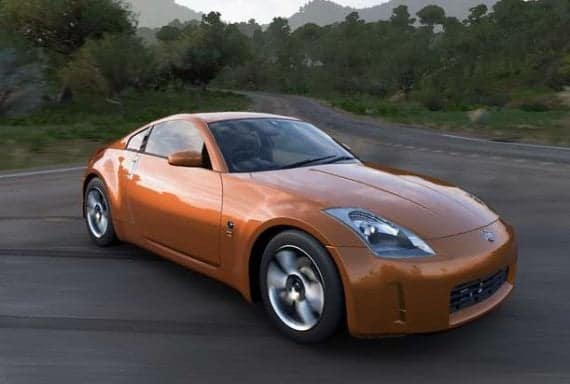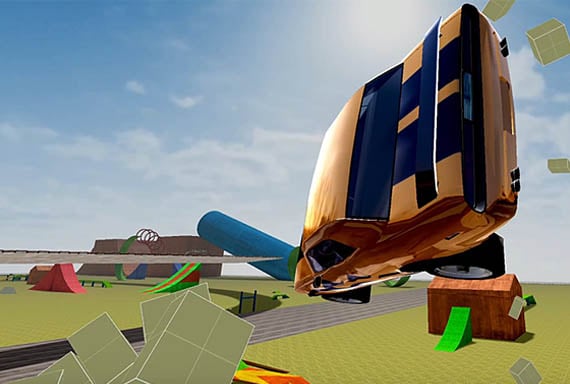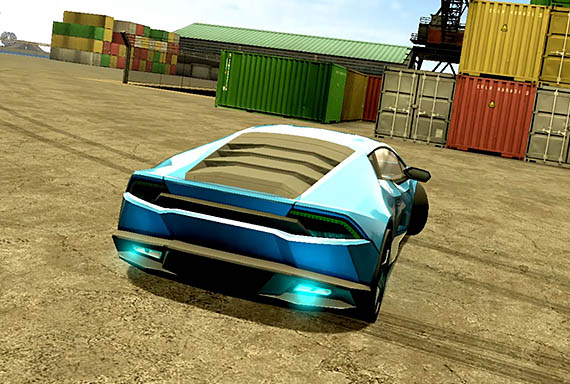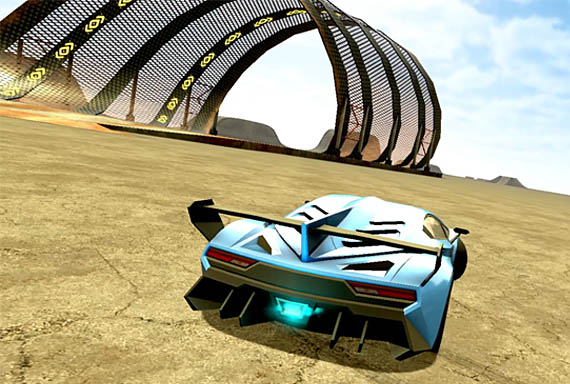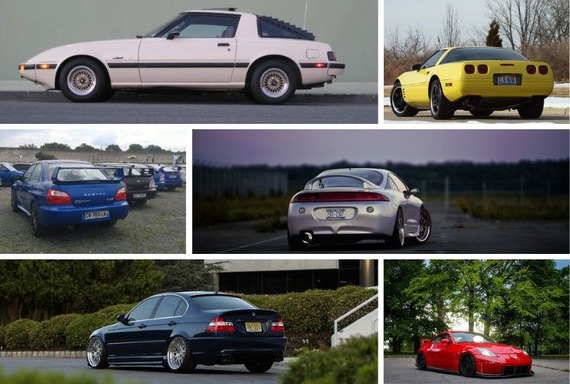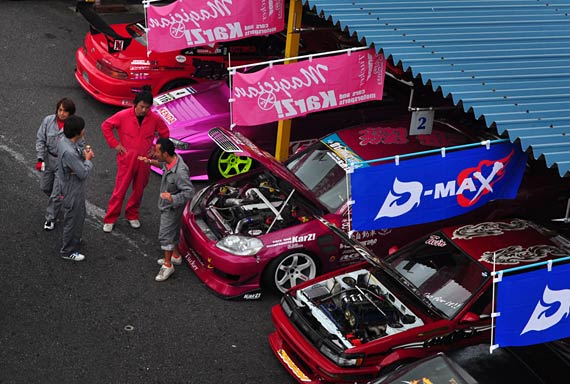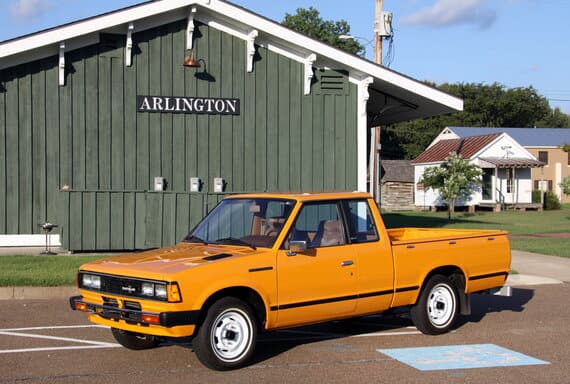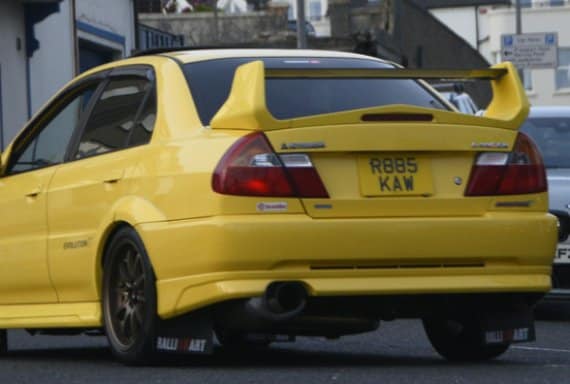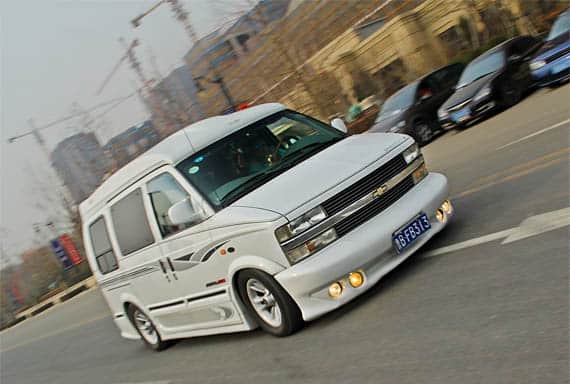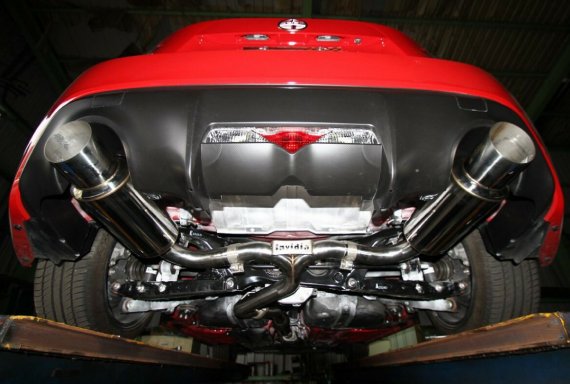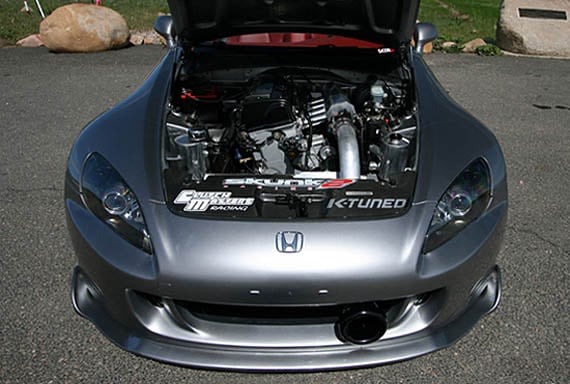What Is A Bosozoku Exhaust?
Nothing captures attention quite like the Bosozoku tuning style. In this guide, we’re checking out some incredible Bosozoku exhausts.
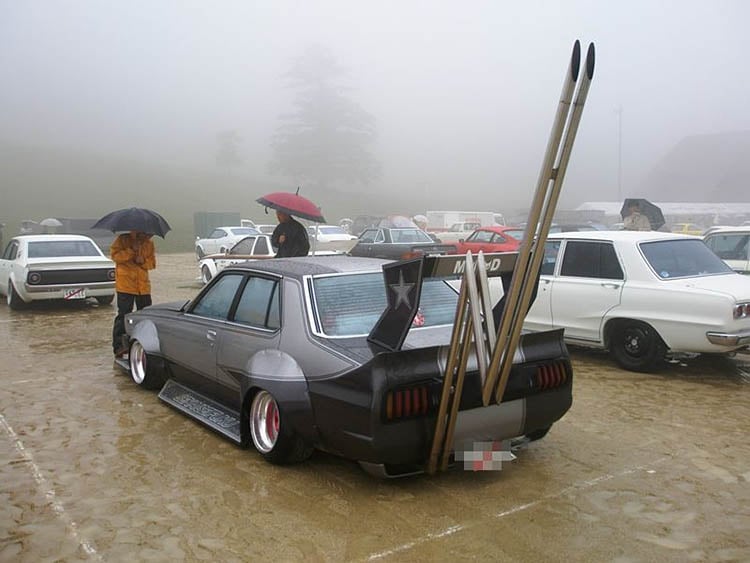
Introduction
If you’ve not already heard of the infamous JDM Bosozoku tuning style, you’re in for a wild ride.
Known for their crazy outfits, aggressive attitudes, and being the center of controversy, the Bosozoku are anything but shy and quiet.
Bosozoku is often a controversial topic with the online car and bike communities, with many having varying opinions of what the Bosozoku tuning style entails.
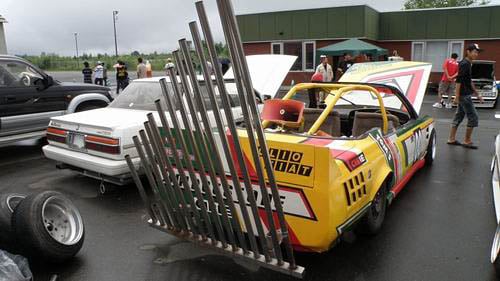
As you may have guessed, Bōsōzoku (暴走族) style was born in the motherland, Japan. The term directly translates to “running out of control tribe”, otherwise known as “violent running gang” (or tribe.)
Others will refer to the Bosozoku car styling as “ZokuSha”, which translates to “gang car”.
Known for riding around during the dark of the night, revving their equally loud and gigantic bike and car exhausts, and generally causing an upset, it comes as no real surprise that they weren’t too popular with outsiders.
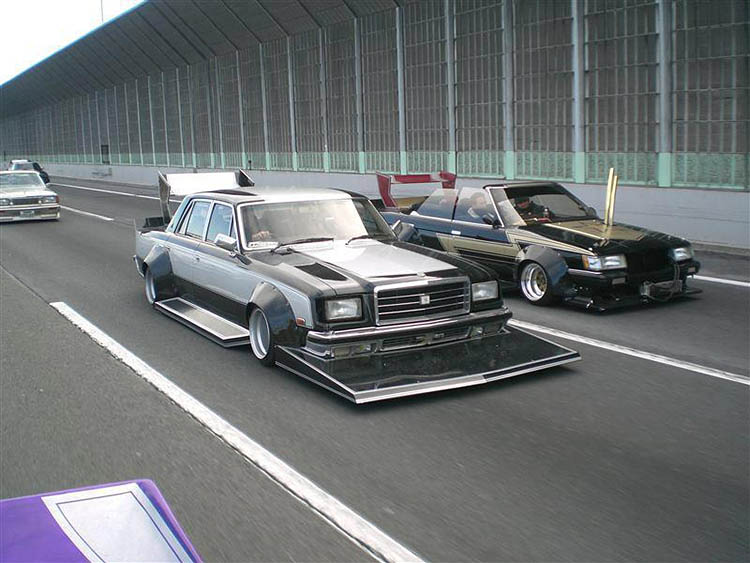
Although we’ve come to appreciate their wild and crazy car builds more than the culture that came with it, the rebellious attitudes of the Bosozoku earned them their feared and hated reputation.
As the style has evolved and achieved worldwide popularity, the gang-based past has become a distant memory, with many enthusiasts simply appreciating the unique tuning style which was born.
With the style continuing to evolve, many owners prefer to use the “Kyusha kai” label rather than Bosozoku, which means “Classic car group”, to steer away from the gang-labeling assigned to the tuning culture.
Thankfully, the Kyusha-style has earned itself a far better reputation, with a strong following of true enthusiasts appreciating a unique car style without looking to wake up the neighborhood with their exhausts in the dead of night.
With much of the crazy tuning style taking inspiration from the 70s and 80s tuning styles, Bosozoku originally arrived on the scene in the 50s.
If you’re keen to know more about the history of the various tuning styles often classed as the ‘Bosozoku’ style, we’ll be visiting that next.
Bosozoku History
Although they’re best known for their outrageous styling designs and the most impressive exhausts you’ll ever see, the fascinating history of the Bosozoku dates back to the 1950s.
When the Japanese auto industry began to expand, the early Bosozoku, the kaminari-zoku (Thunder (or Lightning) Tribe), began to surface.
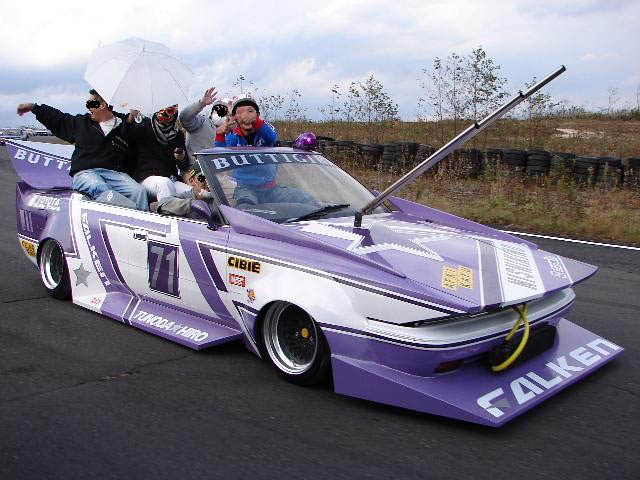
Eager to show their frustration with the government, the gang mainly consisted of members from lower socioeconomic classes keen to upset the masses. Many believe that a novel called Season of the Sun by Shintaro Ishihara birthed this newborn rebel generation.
With the soaring popularity of the Japanese auto industry throughout the 50s and 60s, those that couldn’t previously afford to head to the streets could conveniently do so.
What better way to cause an upset than annoying mainstream society in the middle of the night? Their loud and obnoxious attitudes combined with their love of wild and whacky car and bike exhausts became the perfect combination to cause an uproar.
Terrorizing the streets at night combined with excessive noise, rebellious driving, disrupting traffic, and even sometimes resorting to gang violence, the Bosozoku soon earned themselves a hated reputation among the masses.
Although the cars are the main focus in this article, the bikers were mainly best-known for their violence, disregard for the rules, and often having violent face-offs with police.
The violence would often involve vandalizing cars using baseball bats, metal pipes, and even Molotov cocktails.
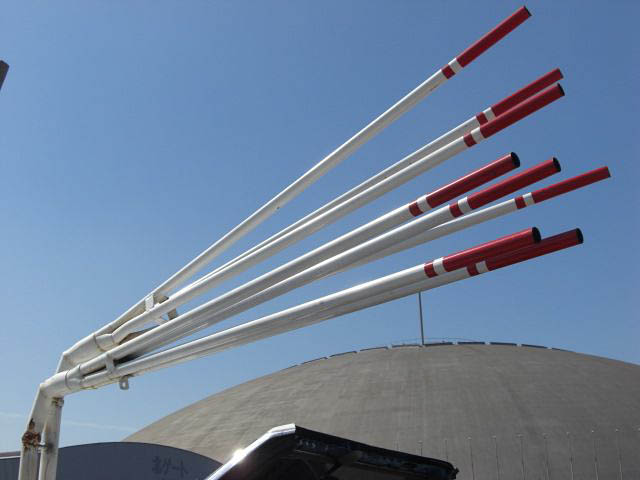
Bikers within the gang were typically under-20 members that wore long coats known as the Tokko-fuku, with various styles, prints, and designs that often contained the Japanese imperial flag, slogans, and club name.
Many Bosozoku were said to have aspirations to become part of the highly-feared Yakuza gang eventually.
It wasn’t just the male members that were out to cause an upset, either.
As the popularity of the Bosozoku continued, the peak membership count in 1982 reached an impressive count of 42,510 members and continued through the 90s.
When the Japanese government passed a new law in 2004, the previously lenient Police force gained powers to arrest groups of bikers, which led to many members reconsidering their actions.
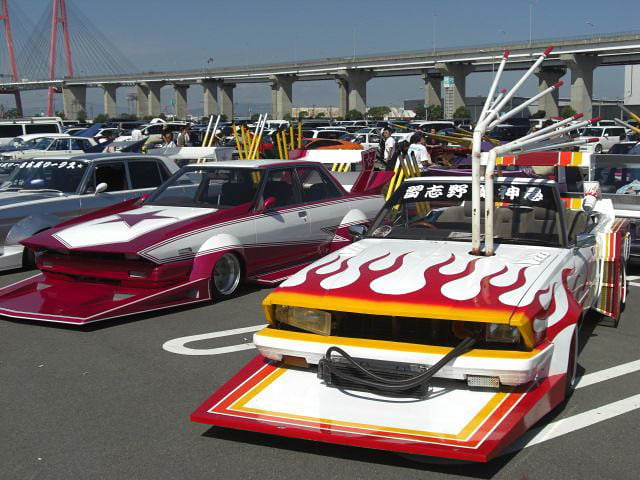
Following this, the member count would fall to an all-time low, with the last recorded figures being just 9,064 in 2011.
As the Bosozoku style evolved, it took inspiration from the various forms of the Japanese tuning scene, often taking the craziest aspects and combining them into a single art form.
It became less about street violence and more about appreciating the art form that came with the Bosozoku style.
In the present day, the Bosozoku style has become the perfect combination of various car cultures throughout the 70s, 80s, and 90s.
Combining the likes of the Kyusha with Yankii (Yanky), Grachan, VIP, and Shakotan styles with wild designs and insane exhausts, it’s often known for combining the best of each world.
With the gang stigma primarily left in the past, what remains of the Bosozoku style comes from a strong following of car enthusiasts simply looking to provide the most impressive designs imaginable, with most going by Kyusha-kai.
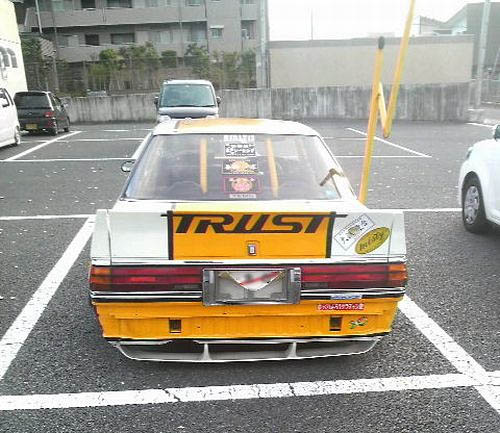
Alongside these are the Kaido racers, typically a combination of Zokusha and Bosozoku, driving their cars slowly down highways in a ‘zig-zag’ formation, revving their engines and waving flags, often joined by Bosozoku riders.
There’s no doubt that the Bosozoku has earned themselves a love/hate reputation over the years. Either way, you have to respect their efforts to go beyond the boundaries of even the wildest imaginations!
Bosozoku Exhausts
When you learn to appreciate the sheer awesomeness of the Bosozoku styling, we can understand why many enthusiasts can become tempted to replicate the look.
While some will import the original cars from the motherland, others will create their Bosozoku-style design from scratch.
After all, those gigantic exhausts and ground-scraping ride height, front splitters longer than the car, and immensely wide overfenders aren’t the most friendly when it comes to shipping across the world!
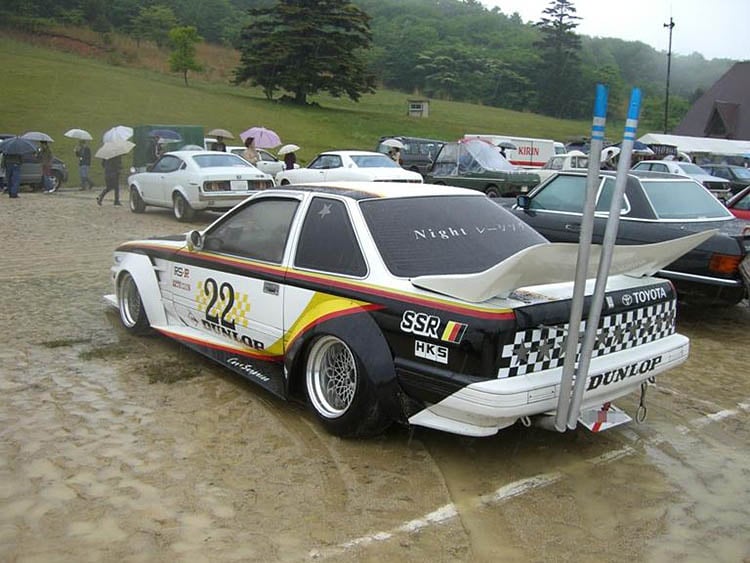
Although many will look at the Bosozoku style in awe, very few will ever dare to create something this outrageous, making it the ultimate head-turner, especially for those who dare to try beyond the Japanese shores.
As we’ve no doubt you’ll be aware, Bosozoku exhausts quite literally have no limitations – anything goes. The crazier, the better!
When it comes to creating these crazy exhausts, we’ve heard of enthusiasts becoming discouraged from their crazy ideas, thinking that their local exhaust shops wouldn’t be capable of building a legit JDM Bosozoku design.
Thankfully, there’s now a convenient, off-the-shelf solution for old-school and new-school alike.
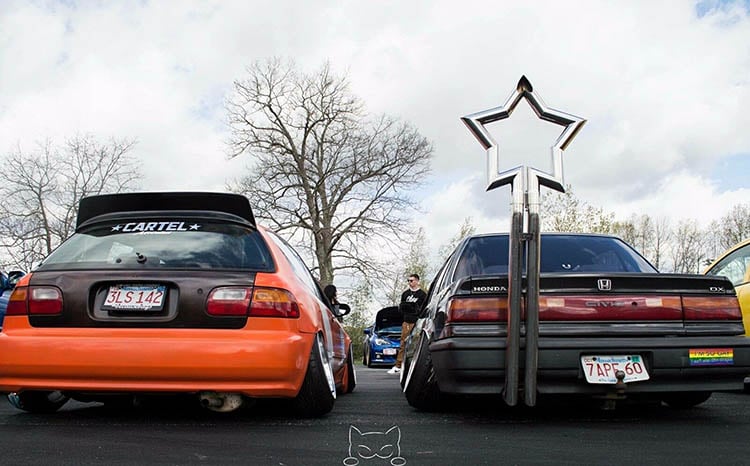
That’s right, even if you’re looking for a Bosozoku-style exhaust to accompany your modern-day Miata, 350Z, or 240SX build, there’s an answer to your prayers.
1320 Performance has dared to bring the unique Bosozoku style to the US with a collection of pre-made aftermarket exhausts with universal fitment.
No longer do you have to worry about your local fabricator crafting the perfect star, as these ready-made Bosozoku exhaust solutions are ready to be shipped directly to your door from California.
1320 Performance Bosozoku Mega Star JDM Exhaust
- Manufacturer: 1320 Performance
- Fitment: Universal
- Purchase link:
1320 Performance Bosozoku Mega Star JDM exhaust (5 feet) |
1320 Performance Bosozoku Mega Star JDM exhaust (6 feet) |
1320 Performance Bosozoku Mega Star JDM exhaust (Tip only)
Our comment: The Mega Star is one of the signature Bosozoku exhaust, and 1320 Performance have done an incredible job with this design, which features an outlet within the tip of the star.
With this listing, you’ll get an exhaust measuring around five feet in height, but if that’s not extravagant enough for your needs, there’s also an insane six-foot option.
If you wish to design a custom length, you can also check out the cheaper tip-only option.
Manufacturer description: “1320 Performance Megastar Bosozoku exhaust pipe. 2.5 inch with a step to 3 inch which means this blastpipe can be weld on to any exhaust system with either a 2.5-inch diameter or 3-inch diameter. To use the 2.5-inch version simply cut off the 3-inch step“.
“USA steel. Every single one is handmade and Tig welded to perfection here in California. Full Stainless steel Construction, not some cheap overseas junk that will crack or rust. Each system requires 28 hours of cutting welding and polishing“.
1320 Performance Bosozoku Version 7 Blastpipe
- Manufacturer: 1320 Performance
- Fitment: Universal
- Purchase link: 1320 Performance Bosozoku Version 7 Blastpipe |
1320 Performance Bosozoku Blastpipe V7 & V8 (Pair)
Our comment: For those of you that aren’t looking to go quite so crazy with your exhaust design, the V7 provides a fantastic, bargain-priced alternative.
This angled, dual-tip slashed design is sleek and somewhat subtle, yet still more than capable of standing out from the crowd.
If you’re looking to run a ‘quad’ (or dual) exit, then make sure you check out the V8 below.
Manufacturer description: “1320 Performance Version 7 Blastpipe is constructed out of 304 stainless steel. 2.5 inch with a step to 3 inch which means this blastpipe can be weld on to any exhaust system with either a 2.5-inch diameter or 3-inch diameter. to use the 3-inch version simply cut off the 2.5-inch step. This would be great for NA or forced induction Applications“.
“USA steel. Every single one is handmade and Tig welded to perfection here in California. Full Stainless steel Construction, not some cheap overseas junk that will crack or rust“.
1320 Performance Bosozoku Version 8 Blastpipe
- Manufacturer: 1320 Performance
- Fitment: Universal
- Purchase link: 1320 Performance Bosozoku Version 8 Blastpipe |
1320 Performance Bosozoku Blastpipe V7 & V8 (Pair)
Our comment: The V8 is almost identical to the V7 above, except that the V7 slants off to the right.
Despite being the same angled, dual-tip, slashed design, the V8 features a left slant, and combining the two twin exhausts can make for the perfect quad exit exhaust with opposite-facing tips.
Manufacturer description: “1320 Performance Version 8 Blastpipe is constructed out of 304 stainless steel. 2.5 inch with a step to 3 inch which means this blastpipe can be weld on to any exhaust system with either a 2.5-inch diameter or 3-inch diameter. to use the 3-inch version simply cut off the 2.5-inch step. This would be great for NA or forced induction Applications“.
“USA steel. Every single one is handmade and Tig welded to perfection here in California. Full Stainless steel Construction, not some cheap overseas junk that will crack or rust“.
1320 Performance Bosozoku Version 9 Blastpipe
- Manufacturer: 1320 Performance
- Fitment: Universal
- Purchase link: 1320 Performance Bosozoku Version 9 Blastpipe |
1320 Performance Bosozoku Blastpipe V9 & V10 (Pair)
Our comment: The V9 offering from 1320 Performance features a far more aggressive angle for those of you looking for a Bosozoku exhaust that’ll undoubtedly turn heads.
When it comes to Bosozoku exhausts, this design is one of the most common, and it’ll go upwards from the rear of the car, pointing towards the sky.
If you’re looking to run a ‘quad’ (or dual) exit, then make sure you check out the V10 below or buy them as a pair.
Manufacturer description: “1320 Performance Version 9 Blastpipe is constructed out of 304 stainless steel. 2.5 inch with a step to 3 inch which means this blastpipe can be weld on to any exhaust system with either a 2.5-inch diameter or 3-inch diameter. to use the 3-inch version simply cut off the 2.5-inch step (last 2 picture on the listing). This would be great for NA or forced induction Applications“.
“USA steel. Every single one is handmade and Tig welded to perfection here in California. Full Stainless steel Construction, not some cheap overseas junk that will crack or rust“.
1320 Performance Bosozoku Version 10 Blastpipe
- Manufacturer: 1320 Performance
- Fitment: Universal
- Purchase link: 1320 Performance Bosozoku Version 10 Blastpipe |
1320 Performance Bosozoku Blastpipe V9 & V10 (Pair)
Our comment: The V10 is almost identical to the V9 above, except that the V9 slants off to the left.
Despite featuring the same aggressive design, the V10 features a right-facing slant, and combining the two twin exhausts can make for the perfect quad exit exhaust with opposite-facing tips.
Manufacturer description: “1320 Performance Version 10 Blastpipe is constructed out of 304 stainless steel. 2.5 inch with a step to 3 inch which means this blast pipe can be weld on to any exhaust system with either a 2.5-inch diameter or 3-inch diameter. to use the 3-inch version simply cut off the 2.5-inch step (last 2 picture on the listing). This would be great for NA or forced induction Applications“.
“USA steel. Every single one is handmade and Tig welded to perfection here in California. Full Stainless steel Construction, not some cheap overseas junk that will crack or rust“.
1320 Performance Bosozoku Version 11 Blastpipe
- Manufacturer: 1320 Performance
- Fitment: Universal
- Purchase link: 1320 Performance Bosozoku Version 11 Blastpipe |
1320 Performance Bosozoku Blastpipe V11 & V12 (Pair)
Our comment: With the same level of aggression as the previous V9 & V10 tips, the V11 & V12 feature a slashed tip design, where the previous options were straight.
Thankfully, 1320 Performance has thought of everything regarding Bosozoku designs, even if the names of their exhausts don’t give too much away!
Manufacturer description: “1320 Performance Version 11 Blastpipe is constructed out of 304 stainless steel. 2.5 inch with a step to 3 inch which means this blast pipe can be weld on to any exhaust system with either a 2.5-inch diameter or 3-inch diameter. to use the 3-inch version simply cut off the 2.5-inch step (last 2 picture on the listing). This would be great for NA or forced induction Applications“.
“USA steel. Every single one is handmade and Tig welded to perfection here in California. Full Stainless steel Construction, not some cheap overseas junk that will crack or rust“.
1320 Performance Bosozoku Version 12 Blastpipe
- Manufacturer: 1320 Performance
- Fitment: Universal
- Purchase link: 1320 Performance Bosozoku Version 12 Blastpipe |
1320 Performance Bosozoku Blastpipe V11 & V12 (Pair)
Our comment: The V12 is almost identical to the V11 above, except that the V11 slants off to the left.
Despite featuring the same aggressive design, the V12 features a right-facing slant, and combining the two twin exhausts can make for the perfect quad exit exhaust with opposite-facing tips.
Manufacturer description: “1320 Performance Version 12 Blastpipe is constructed out of 304 stainless steel. 2.5 inch with a step to 3 inch which means this blast pipe can be weld on to any exhaust system with either a 2.5-inch diameter or 3-inch diameter. to use the 3-inch version simply cut off the 2.5-inch step (last 2 picture on the listing). This would be great for NA or forced induction Applications“.
“USA steel. Every single one is handmade and Tig welded to perfection here in California. Full Stainless steel Construction, not some cheap overseas junk that will crack or rust“.
Conclusion
While the Bosozoku are known for their extreme and unique exhaust designs, this can often be a challenge for those looking to re-create the style outside Japan, and you’re likely to get a confused look from a local fabricator when you ask for a 6-foot high star-shaped exhaust.
Thankfully, this selection of exhausts from 1320 Performance provides a convenient off-the-shelf method based within the US to make life far more straightforward.
Sure, if you’re looking to go for a crazily unique design, you’ll have to go down the traditional route of importing from Japan or an entirely custom design.
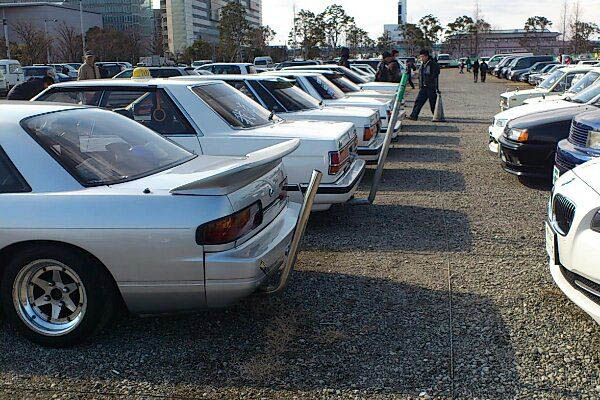
Either way, we hope this guide has provided you with some wild ideas!
If you do happen to go down the custom route, make sure you fire a photo over to us, and we’ll be more than happy to feature your ride in this guide for future readers to enjoy.
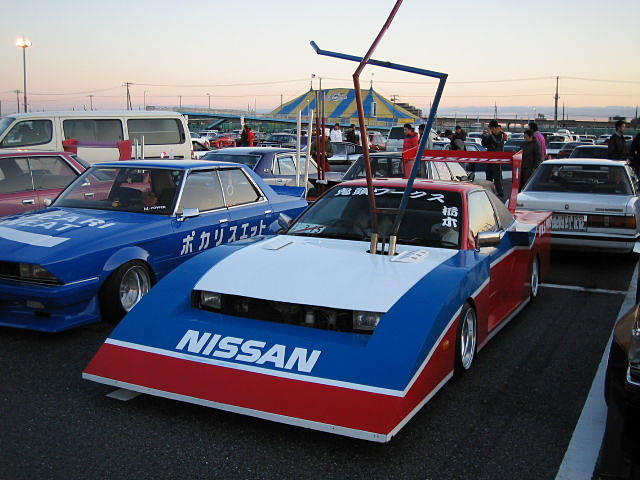
So, there we have it! We hope that we’ve covered everything you could want to know about Bosozoku exhausts in this guide.
If you love quirky JDM cars as much as us, you need to make sure you also check out our kei cars guide!
Thank you for reading our Bosozoku exhaust guide.
If you enjoyed this article, please share it with the buttons at the bottom of your screen. If you’ve found this information useful, then please take a moment to share it with other JDM enthusiasts. We appreciate your support.
Photography credits
We thank the following entities for the use of their photography in this article:
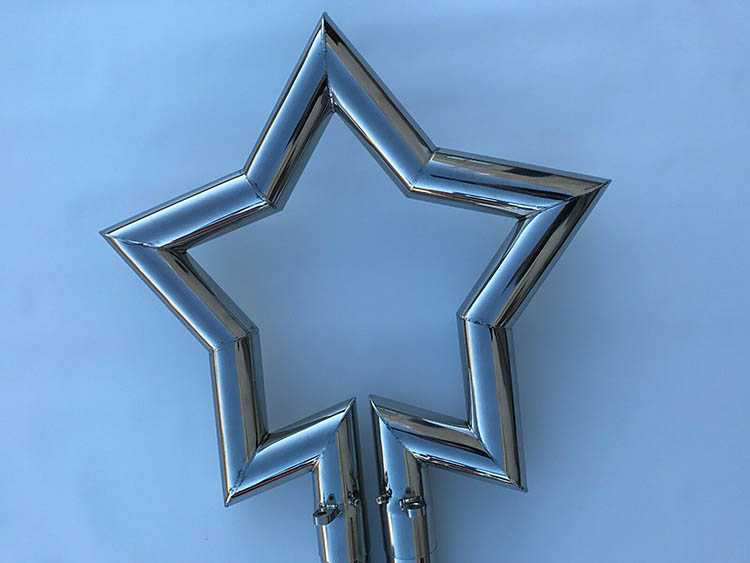
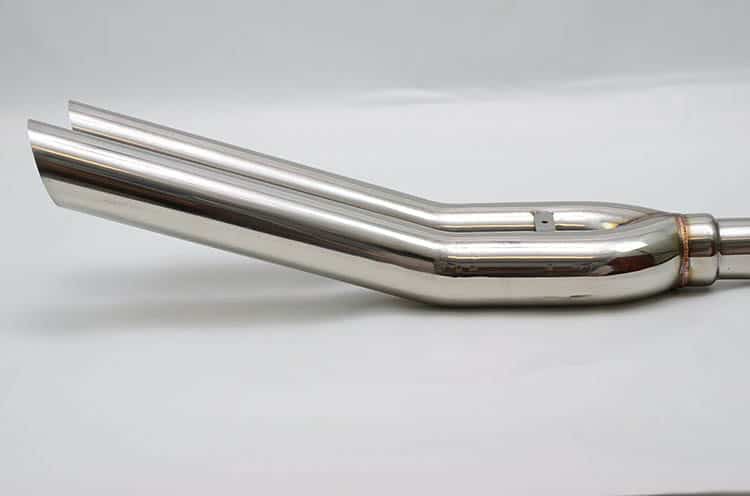
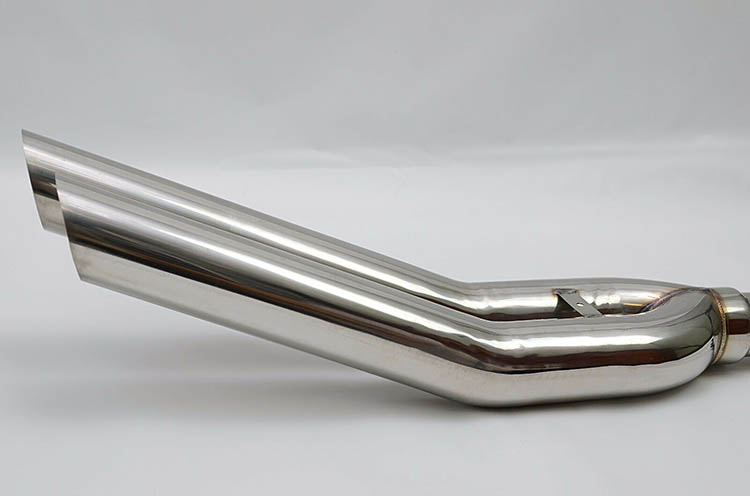
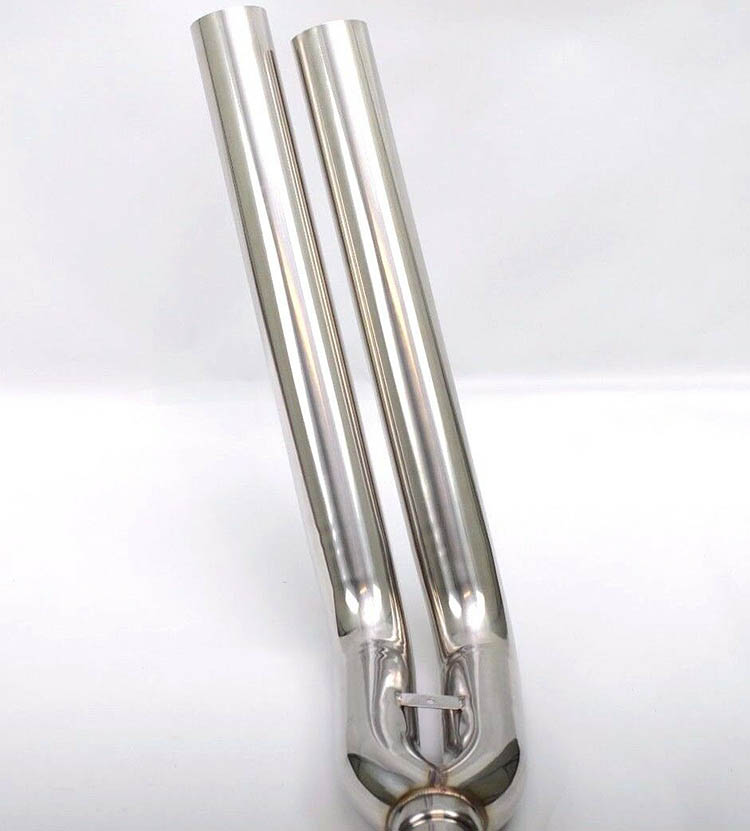
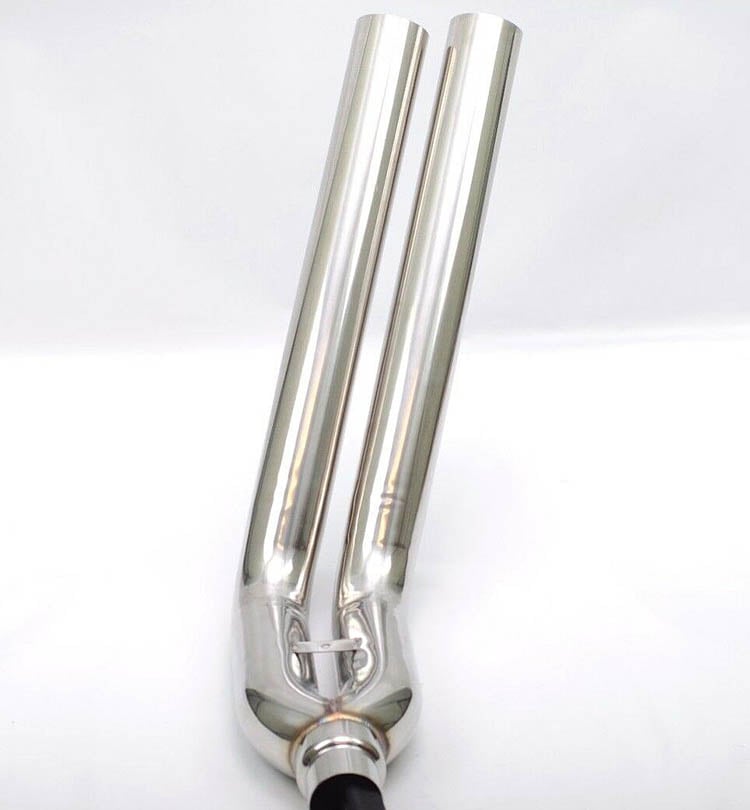
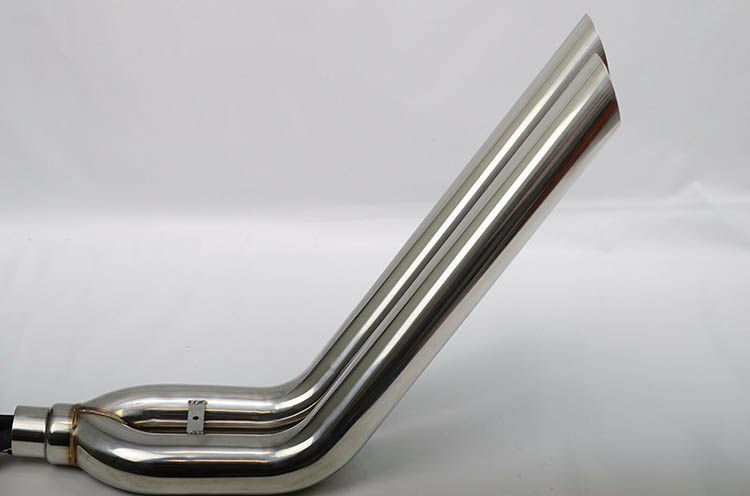
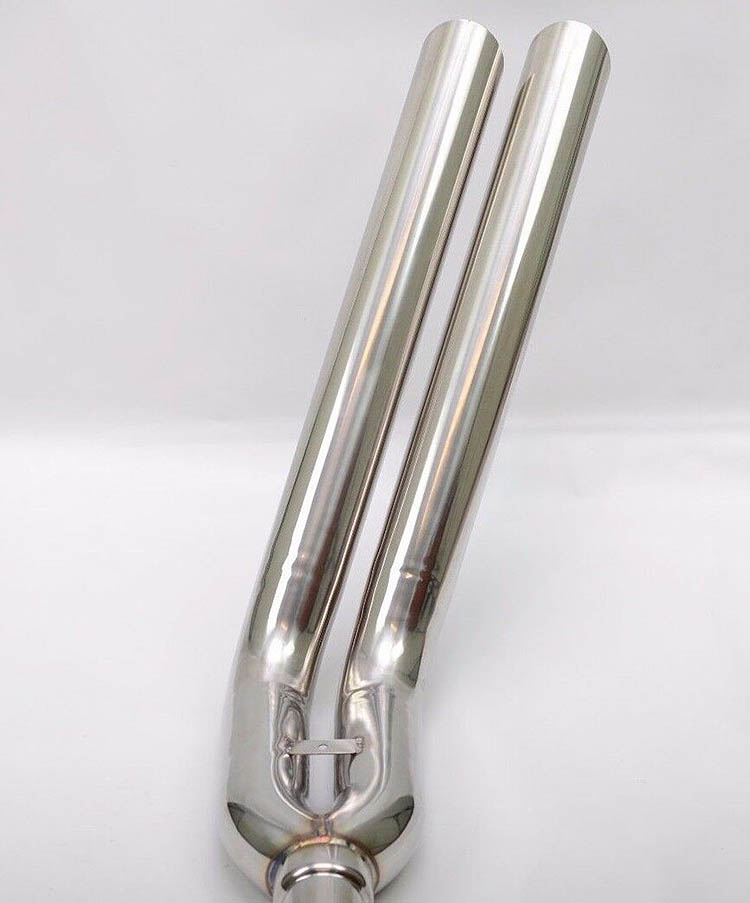


 (3 votes, average: 4.33 out of 5)
(3 votes, average: 4.33 out of 5)